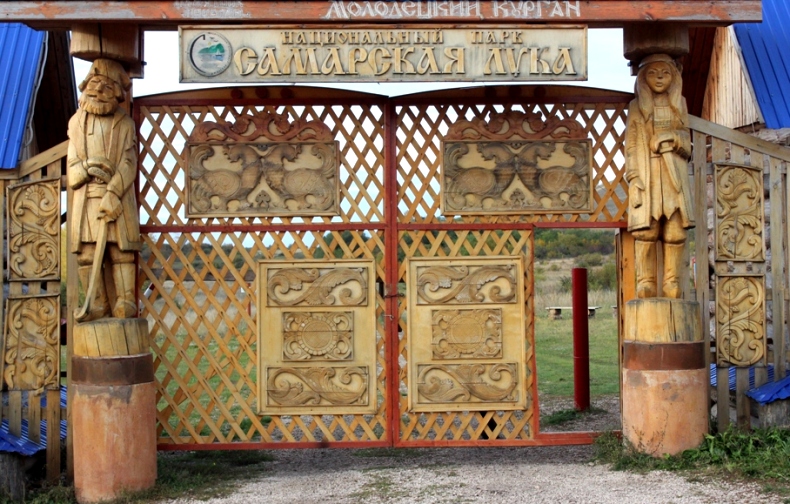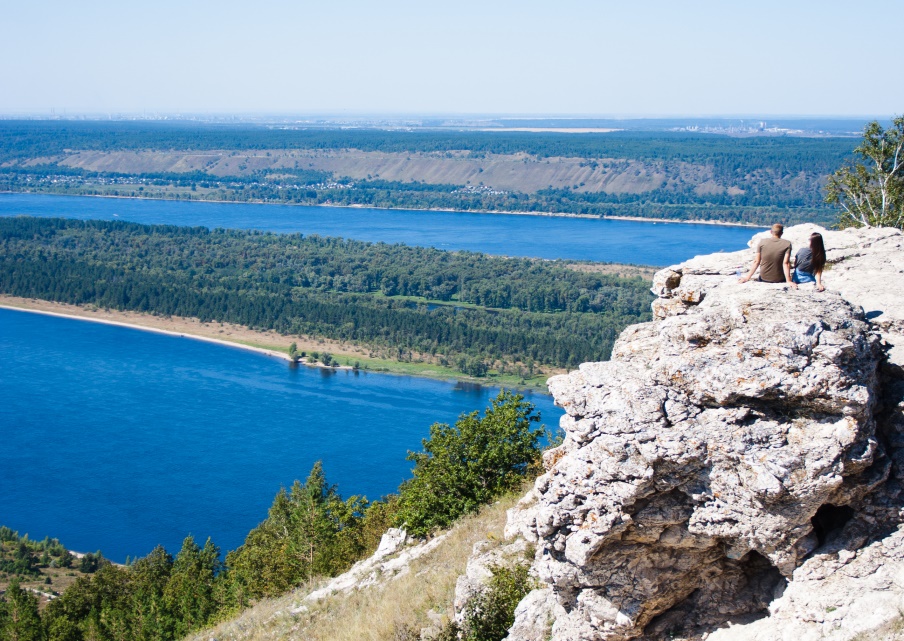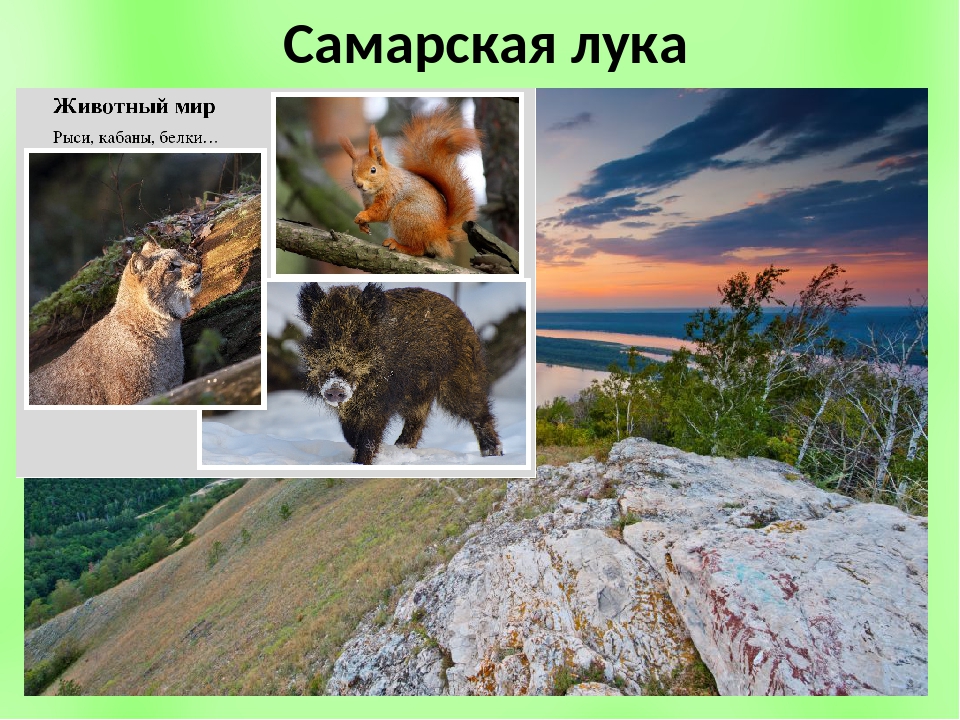Gymnasium No. 4 intitolato a M. A. Khabichev
 Скачать 1.1 Mb. Скачать 1.1 Mb.
|
|
MBOU KGO "Gymnasium No. 4 intitolato a M.A. Khabichev" The project: « Luka Samarskaya»  Performed by a student of the 7th class: Chotchaeva Amina Azret-Aliev Karachayevsk, 2022 «Лука Самарская» находится в Самарской области. Это очень красивое место, так же как и "Поозерье Смоленское", которое находится в Смоленской области. Нетрудно понять, почему так называют национальный парк "Смоленские озера". Конечно, он находится недалеко от Смоленска. Он окружен большим количеством водоемов. Здесь расположено целых 35 ледниковых озер, каждое из которых по-своему очень красиво.  В северной части парка расположены Жигулевские горы. Они представляет собой часть Приволжской возвышенности и находятся на правом берегу Волги. Наивысшая точка Жигулевских гор — гора Безымянная, высота которой составляет 381,2 м. Необходимо отметить, что это также и высшая точка средней полосы Европейской части России. Здесь есть характерные скалистые, почти вертикальные обрывы, большая расчлененность склонов, но все же большая часть «Самарской Луки» — равнина с общим уклоном к югу. По территории парка проходит южная граница лесостепи. История создания Еще около 90 лет назад известнейший русский ученый, академик Владимир Николаевич Сукачев активно поддержал образовавшееся на Самарской Луке движение по защите уникальной природы края. В 1927 году на Самарской Луке появились первые природные резерваты, ставшие впоследствии частью Средневолжского заповедника.  В период с 1951 по 1966 годы парк дважды закрывали из-за активного промышленного освоения края, но в начале 1960-х годов сформировалось мощное движение в защиту Самарской Луки. В 1966 году был окончательно восстановлен крупный заповедник, переименованный в Жигулевский. Еще около 20 лет прошло до момента организации национального парка. Сегодня на территории «Самарской Луки» есть около 200 природно-исторических памятников. Очень много здесь интереснейших археологических находок: Муромский городок — одно из самых крупных поселений Волжской Болгарии на рубеже IX-XIII веков — и курганные могильники возле села Новинки. Флора «Самарской Луки» насчитывает 1044 вида сосудистых растений. Высшие и низшие грибы представлены здесь 750 видами: маслятами, опятами, вешенками, мухоморами... Характерный гриб данной местности — сыроежка (Russula), которую можно встретить практически повсюду. Фауна «Самарской Луки» насчитывает 54 вида млекопитающих, 200 — птиц и 46 — рыб. "Luka Samarskaya" is located in the Samara region. This is a very beautiful place, as well as the Smolenskoye Poozerye, which is located in the Smolensk region. It is not difficult to understand why the Smolensk Lakes National Park is so called. Of course, it is not far from Smolensk. It is surrounded by a large number of water bodies. There are as many as 35 glacial lakes here, each of which is very beautiful in its own way.  The Zhiguli Mountains are located in the northern part of the park. They are part of the Volga Upland and are located on the right bank of the Volga. The highest point of the Zhiguli Mountains is Mount Bezymyannaya, whose height is 381.2 m. It should be noted that this is also the highest point in the middle zone of the European part of Russia. There are characteristic rocky, almost vertical cliffs, a large dissection of the slopes, but still most of the "Samarskaya Luka" is a plain with a general slope to the south. The southern border of the forest-steppe passes through the territory of the park. History of creation About 90 years ago, the most famous Russian scientist, academician Vladimir Nikolaevich Sukachev actively supported the movement to protect the unique nature of the region that had formed on the Samarskaya Luka. In 1927, the first natural reserves appeared on Samarskaya Luka, which later became part of the Middle Volga Reserve.  In the period from 1951 to 1966, the park was closed twice due to the active industrial development of the region, but in the early 1960s a powerful movement was formed in defense of the Samarskaya Luka. In 1966, a large reserve was finally restored, renamed Zhigulevsky. About 20 years passed before the organization of the national park. Today, there are about 200 natural and historical monuments on the territory of Samarskaya Luka. There are a lot of interesting archaeological finds here: the Murom town - one of the largest settlements in Volga Bulgaria at the turn of the 9th-13th centuries - and burial mounds near the village of Novinki. The flora of "Samarskaya Luka" includes 1044 species of vascular plants. Higher and lower mushrooms are represented here by 750 species: boletus, honey mushrooms, oyster mushrooms, fly agaric... A characteristic mushroom of this area is russula (Russula), which can be found almost everywhere. The fauna of Samarskaya Luka includes 54 species of mammals, 200 species of birds and 46 species of fish. "Luka Samarskaya" si trova nella regione di Samara. Questo è un posto molto bello, così come lo Smolenskoye Poozerye, che si trova nella regione di Smolensk. Non è difficile capire perché il Parco Nazionale dei Laghi di Smolensk sia così chiamato. Naturalmente, non è lontano da Smolensk. È circondato da un gran numero di corpi idrici. Ci sono ben 35 laghi glaciali qui, ognuno dei quali è molto bello a modo suo. I Monti Zhiguli si trovano nella parte settentrionale del parco. Rappresentano una parte dell'altopiano del Volga e si trovano sulla riva destra del Volga. Il punto più alto dei monti Zhiguli è il monte Bezymyannaya, la cui altezza è di 381,2 m Va notato che questo è anche il punto più alto nella zona centrale della parte europea della Russia. Ci sono caratteristiche scogliere rocciose, quasi verticali, un'ampia dissezione dei pendii, ma ancora la maggior parte della "Samarskaya Luka" è una pianura con una pendenza generale a sud. Il confine meridionale della foresta-steppa attraversa il territorio del parco. Storia della creazione Circa 90 anni fa, il più famoso scienziato russo, l'accademico Vladimir Nikolaevich Sukachev, sostenne attivamente il movimento per proteggere la natura unica della regione che si era formata sulla Samarskaya Luka. Nel 1927 apparvero le prime riserve naturali su Samarskaya Luka, che in seguito divenne parte della Riserva del Medio Volga. Nel periodo dal 1951 al 1966, il parco fu chiuso due volte a causa dell'attivo sviluppo industriale della regione, ma all'inizio degli anni '60 si formò un potente movimento in difesa della Samarskaya Luka. Nel 1966 fu finalmente restaurata una grande riserva, ribattezzata Zhigulevsky. Passarono circa 20 anni prima dell'organizzazione del parco nazionale. Oggi ci sono circa 200 monumenti naturali e storici sul territorio di Samarskaya Luka. Ci sono molti interessanti reperti archeologici qui: la città di Murom - uno dei più grandi insediamenti nel Volga Bulgaria a cavallo tra il IX e il XIII secolo - e i tumuli vicino al villaggio di Novinki. La flora di "Samarskaya Luka" comprende 1044 specie di piante vascolari. I funghi superiori e inferiori sono qui rappresentati da 750 specie: porcini, funghi miele, funghi ostrica, agarico di mosca... Un fungo caratteristico di questa zona è la russula (Russula), che si trova quasi ovunque. La fauna di Samarskaya Luka comprende 54 specie di mammiferi, 200 specie di uccelli e 46 specie di pesci. |
